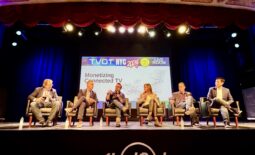The orgy of bombastic advertising self-love otherwise known as the Super Bowl, the National Football League’s annual championship game, has become a prisoner of the web and social media, and cannot justify the outrageous cost of broadcast TV spots. This was particularly evident in Super Bowl LIII’s mostly miscued spots and lost opportunities, highlighted even further by the lowest-scoring Super Bowl of all time.
All of this sounds familiar: brands using the bullhorn and the pie in the face to scream over the din. But that isn’t the real issue: it’s a lack of understanding where the audience is. The audience for the Super Bowl is everywhere (even on smart speakers), not just TV, and while TV is still king, it can no longer justify a one-screen-fits-all story.
What mystifies me about Super Bowl LIII’s ads is the lack of innovation, of 2nd-screen and even 3rd-screen interactive installations, calls to action, or use of technology that would make a non-football fan interested in a brand’s message. Why merely put up 30 seconds of overstuffed hyperbole and visual mayhem on broadcast television when you can leverage people’s more ubiquitous viewing screens: their mobile devices. This seems to me to be a travesty of capitulation, not mere conservatism.
I say that the Super Bowl ads are a prisoner of the web for a few reasons. One, it seems that brands are so skittish about instantaneous negative or critical reactions to spots that they are not taking any risks. This blandness and message sanitization is the curse of corporate communications in an age of increased polarization and, yes, fake news, but it doesn’t make sense if you are spending $5 million for a spot, on top of production and promotion costs. The “go big or go home” mantra for the world’s biggest advertising moment (never mind that more people watch the World Cup Final than the Super Bowl) seems to have been reduced to “go safe, or go home.” Secondly, the prisoner analogy seems apt in the way that brands now seem to have capitulated to the idea that whatever transmedia implementation they might embark upon is not worth the risk, or is only of interest to a tiny sliver of the audience. In an era of short-form content (even with the death of Vine), there seems to be much more that brands can do around the Super Bowl.
To be fair, the spots that were well-produced (Bud Light, Budweiser, Turkish Airlines, Weather Tech, to name a few) either have longstanding audiences and built-in online and social media audiences, but one would have expected some kind of prompt to an app or web extension, or even Facebook conversation. The mere fact that Ridley Scott returned to the Super Bowl with the cinematic thriller of an ad for Turkish Airlines was exciting, and had a nice call to action. The Burger King spot with Andy Warhol eating a Whopper in 1982 was amazing just for the site of Warhol eating a Whopper. Who knew? This was from a Swedish film, and the Warhol segment has been posted on YouTube. Perhaps #EatLikeAndy will catch on, and become part of a larger campaign, but there is no interactive component. Warhol would have found this a waste. He would have pulled all kinds of tricks with our mobile devices, game consoles, and even smart speakers. It was ironic that he showed up on this Super Bowl ad roster, in this sense.
And, yes, one of the few tech-related ads, from Amazon Alexa, was a massive failure of imagination and use of the technology. No spiffs for users of Alexa, no interesting narrative about the technology, and no tie-in via Amazon’s many sites (or, for that matter, Whole Foods). Just a colossal waste of time and money, with Harrison Ford (yes, get Han Solo and his dog to sell a backward message about what Alexa doesn’t do well) looking old and cranky. This was quite sad to see, on an evening where few tech companies were advertising.
If the Super Bowl really were the kind of event that we would all watch, regardless of our football affinities, the NFL and the broadcaster would make it as participatory as possible, leveraging more than 8K cameras, surround sound or the latest iso camera position. But, under fire for its handling of Colin Kaepernick and the Chronic Traumatic Encephalopathy (CTE) lawsuits that former players have filed, the NFL and its advertisers seemed to feel under pressure from a blitz – from its own would-be audience. Hopefully, Super Bowl LIV will “LIV” up a greater expectation for putting on a show, and actually having fun with its audience, instead of just talking to themselves. And playing it safe.
Take a listen to my conversation with my brother, Fred Pfaff, on the hits and misses of Super Bowl LIII ads, which we conducted on February 4, 2019 over lunch at P.J. Clarke’s at Lincoln Center, New York City. You can listen at: https://soundcloud.com/chris-pfaff-1/chris-and-fred-pfaff-discussing-super-bowl-liii-ads

Fred Pfaff (left) and me, at P.J. Clarke’s at Lincoln Center, NYC


